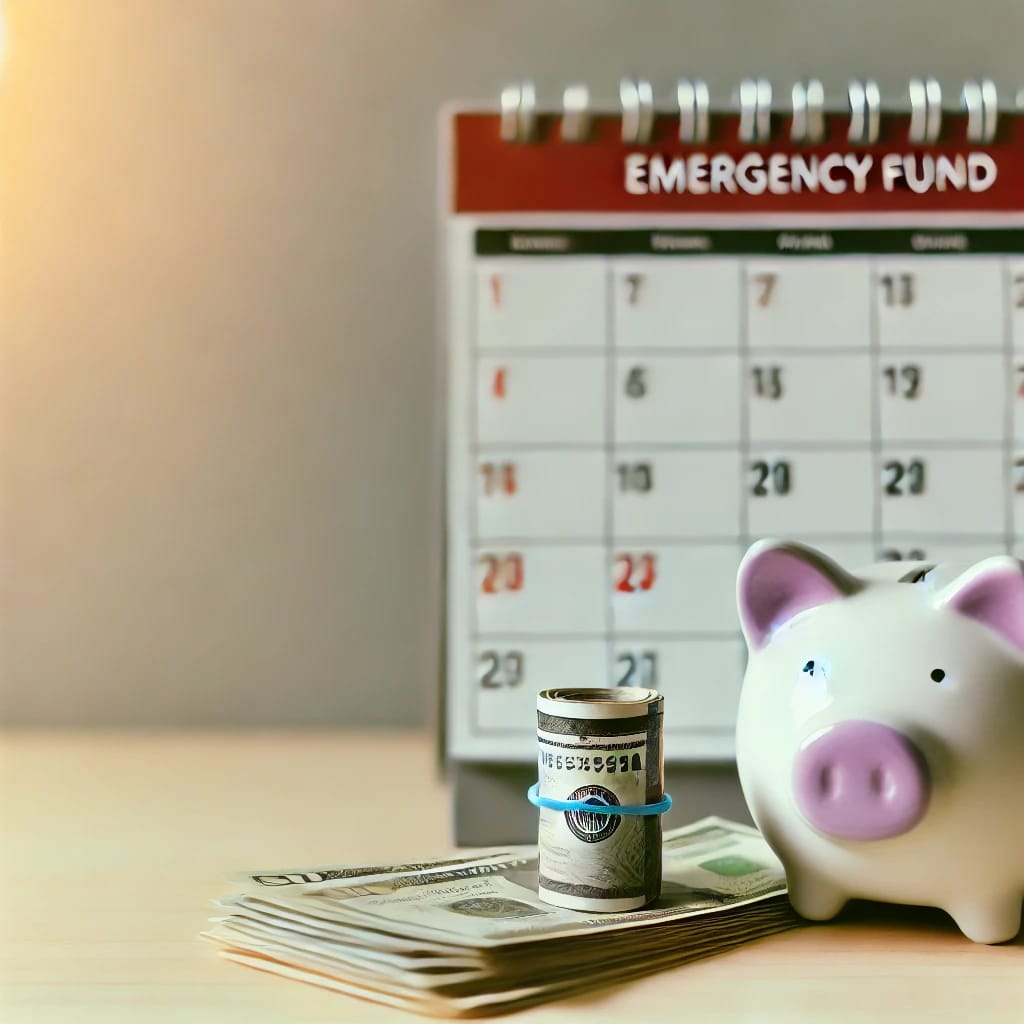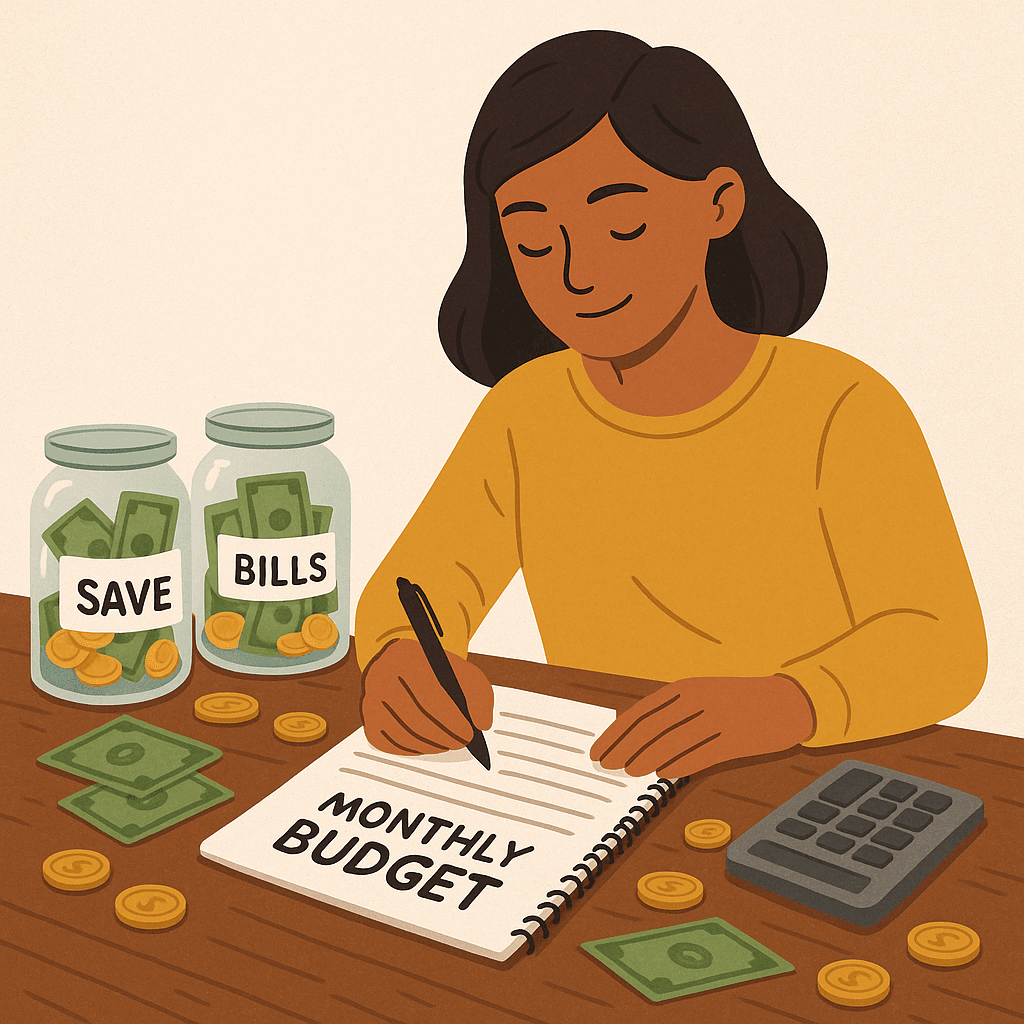Nearly 40% of people can’t handle a surprise £300–£400 bill without going into debt. That creates stress. A car breaks down. Then a medical bill hits. Suddenly, you’re scrambling.
With no emergency savings, small problems turn into big ones. You swipe a credit card, borrow money, or miss a payment. It snowballs fast.
An emergency fund protects you from that. This guide will show you how to build one—even from zero. Clear steps. No fluff. Just peace of mind, one pound at a time.
🟢 What is an Emergency Fund?
An emergency fund is simple. It’s a pile of money set aside just for bad days.
Not for holidays. Not for shopping. Not for fun. Just emergencies.
Things like:
- Your boiler breaks
- You lose your job
- Your car won’t start
- You get hit with a hospital bill
You keep this money separate. Out of sight. Easy to access — but only when life punches you in the mouth.
And no, your “savings account” is not your emergency fund if you dip into it every month. This one stays locked unless something serious happens.
Your future self will thank you for being smart enough to prepare.
🟢 How Much Should You Save?
There’s no magic number. But here’s a simple rule:
Save 3 to 6 months of your basic living costs.
If your monthly bills (rent, food, transport, etc.) are £1,500, aim for:
- Minimum: £4,500 (3 months)
- Safer: £9,000 (6 months)
That way, if your income stops or something goes wrong, you’ve bought yourself time — without touching a credit card.
Here’s what changes the amount:
- Stable job? 3 months might be enough.
- Unstable job or freelance? Go for 6+ months.
- Kids or people depending on you? Save more.
- Low fixed costs and no debt? You can get away with less.
It’s not about being perfect. It’s about being ready.
Even £500 is better than £0. Start there. Then build.
🟢 How to Build Your Emergency Fund – Step by Step
You don’t need to save it all at once. Just follow this simple path:
🔹 Step 1: Set a Target
Figure out your real monthly needs — rent, food, bills.
Let’s say it’s £1,200/month. Your target becomes:
- £3,600 (3 months) — minimum safety
- £7,200 (6 months) — solid backup
Write this number down. Stick it where you’ll see it daily.
🔹 Step 2: Start with £500
Before aiming big, hit a quick win.
£500 covers most small surprises — car tyre, dental check, broken boiler.
This first step builds confidence. Once you get there, don’t stop.
🔹 Step 3: Automate It
Make saving automatic.
Set a small transfer each payday into a separate savings account — even £20/week adds up.
When you don’t see it, you don’t spend it.
🔹 Step 4: Cut Tiny Expenses
Cut what doesn’t matter.
One takeaway per week = £40/month saved.
Streaming service you don’t use? Cancel it.
Cheaper phone plan? Do it now.
All these go into your emergency pot.
🔹 Step 5: Increase as You Grow
As you earn more, save more.
Got a raise? Add £25/month extra to your savings.
Finished paying off a loan? Move that money straight to your fund.
Always stay ahead. Life won’t warn you before it hits.
🟢 Where to Store Your Emergency Fund (So It’s Safe and Ready)
You want your emergency money easy to reach — but not so easy that you’re tempted to spend it.
Here’s where to keep it:
🔹 High-Interest Savings Account
Look for one that’s:
- Easy to access online
- Pays at least some interest
- Separate from your main bank account
You want it far enough to avoid impulse spending, but close enough to grab if life hits you hard.
🔹 Money Market Account
This is like a savings account with a bit more flexibility and sometimes higher interest.
It’s good if you want to write a cheque or use a debit card in a real emergency — but still keep the fund safe.
🔹 What to Avoid
⚠️ Don’t put your emergency fund in:
- Stocks
- Crypto
- Anything that can lose value or take time to withdraw
Emergencies don’t wait for the market to go up.
When you build your emergency fund, the goal is security, not profit.
🟢 When to Use Your Emergency Fund (And When NOT To)
our emergency fund is for real emergencies — not for last-minute deals or Friday night cravings.
💥 Use it ONLY when:
- You lose your job and can’t pay the bills
- You face an urgent medical bill
- Your car breaks down and you need it to get to work
- Something in your home breaks that must be fixed now (e.g. boiler, fridge, plumbing leak)
These are moments where you need money fast — and your fund steps in to protect you.
🚫 Don’t use it for:
- Holidays
- Shopping sprees
- Monthly bills you forgot to budget for
- Upgrades, gadgets, or lifestyle wants
These aren’t emergencies. They’re just poor planning or impulse decisions.
Treat your emergency fund like a fire extinguisher:
Only break the glass when it’s really needed.
🟢 Conclusion – Protect Yourself Before Life Punches You
Most people wait until disaster strikes. You won’t.
An emergency fund isn’t just about money — it’s about control.
It means you’re not begging, panicking, or stuck when something goes wrong.
It means your life doesn’t fall apart just because your car did.
Start with what you can — £100, £500, anything.
Add to it every week.
Make it a rule: “I don’t touch this unless it’s urgent.”
Your future self will thank you.
💬 Your turn:
Have you ever faced an emergency without savings?
What helped you get back on your feet?
Share your experience in the community section and help someone else stay prepared.



